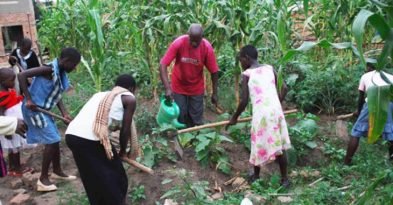Summary
Part II. In many countries, it is standard practice that if your land is impacted by a government project, you have to be paid first or later.
Uganda’s land acquisition law details steps for acquiring private land but the process has lately become a nightmare and is one of the hurdles awaiting the East African Crude Oil Pipeline.
Only Tanzania offers some ease, which was a basis for choosing the Hoima-Tanga route but even then, a full plate awaits. Frederic Musisi and Dominic Bukenya traveled along the pipeline corridor to explore the issue.
Journeying through rural Sembabule District is both laborious and exciting. The bumpy roads, slippery on rainy days and dusty on dry days, and refreshing tracts of green acreage, from farmlands to thickets, are the hallmarks of the trip.
Sembabule, home to several top shots in government, is bordered by Mubende to the north, Gomba to the northeast, Bukomasimbi to the east, Lwengo to the south, Kiruhura to the north-west, and Lyantonde to the southwest.To the northeast, River Katonga separates Sembabule and Gomba. On Sembabule side, in Rugushuru Sub-county, the expansive tract of farmland adjoining the river is owned by a senior Cabinet minister. The expansive idle farm land on Gomba side is owned by a top Electoral Commission official.
The East African crude oil pipeline (EACOP) will be stretching through both farms. It will be moving via Gomba, from Hoima, Kikuube, Kyankwanzi, Kakumiro and Mubende districts, through Sembabule to Lwengo, Kyotera and Mutukula Town (Rakai District) at the Uganda-Tanzania border.The Ugandan section of the pipeline is about 296km and passes through 10 districts, 25 sub-counties and 172 villages, of the total length of 1,443km from the proposed pump station in Hoima to Chongleani terminal near Tanga port on the Indian Ocean.
Learn More: Daily Monitor
Related Posts

COTFONE Launches Reading Outreach in Lwengo District
COTFONE, through its community library initiative, has successfully conducted the first reading outreach program in Kiboobi Village, Kisekka Subcounty, Lwengo... read more

Poverty bites as locals in oil fields wait for pay-out
As government continues to prospect and explore oil wells in parts of western, central and northern regions, scores of homesteads... read more

Kalangala to start rearing, exporting edible beetles
Kalangala District has introduced a programme to rear, process and export edible huhu grubs.
The insects, which have a resemblance to... read more

Children’s right to food is the reason to teach them farming
For Yisito Kayinga Muddu, teaching children to grow their own food is a human rights issue. “Young children must be... read more

